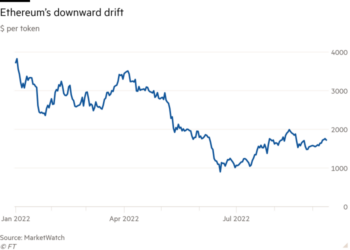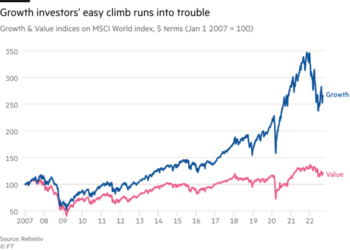The telecommunications bubble at the end of the 1990s never earned a place in the popular imagination to match the dotcom bubble that occurred at the same time.
Deregulation and early internet euphoria combined to produce a massive over-building of new networks. An estimated $2tn of telecoms stock market value went up in smoke when the mania passed. But the new fibre optic cables that had been laid lived on, meaning that the infrastructure was already in place when companies such as Google and Facebook emerged to drive a much bigger wave of digital activity.
In the world of cryptocurrencies, could something similar be taking shape with a different kind of infrastructure? When the crypto craze passes, many of the currencies that have sprung up in the shadow of bitcoin will be worthless. But their soaring transaction volumes have created demand for real infrastructure and big investments are being made. If blockchains represent a new architecture that will shape the future of online activity beyond crypto speculation, then the need for infrastructure will remain.
Picking the ultimate winners in this game requires making assumptions about how this world will evolve. Will it lead to complementary, but linked, blockchains, with room for many players? Or will this be a winner-takes-all industry where a handful of networks each becomes dominant in a particular type of transaction? And will the software and services needed to make the technology usable by non-experts give rise to dominant companies in different parts of a new technology “stack”?
Big investments made in two companies this week highlight where some of the most prominent venture investors are placing their bets. They also show how one of the ideals behind the cryptocurrency movement — that it will lead to decentralised networks beyond the control of narrow government or corporate interests — may not survive the twin realities of technology and capitalism.
Alchemy, which has raised $200mn, supplies tools that make it easier for businesses to interact with the blockchain. When they want to post to a network or call information from it, it is often through Alchemy’s technical links, removing the need to interact directly. That puts Alchemy in a strong position to mediate the data flows to blockchains, supplying the analytics and other tools users will need to operate. The emergence of companies like this shows that new bottlenecks may already be forming in the supposedly decentralised blockchain world.
The second investment — a $450mn token sale by Polygon — represents a bet on the Ethereum network. Ethereum, which was the first to offer the “smart contracts” that are at the heart of decentralised applications being built on blockchains, is severely constrained. It handles a maximum of only 13 transactions per second, and is years behind in its efforts to upgrade its network. That has driven up transaction costs, as users bid for a scarce resource. To relieve the pressure, Polygon, and companies like it, are building on top of Ethereum which could make the blockchain the central hub of a much bigger tech ecosystem.
This highlights what has become known as the “blockchain trilemma”. Ideally, the networks would combine security, decentralisation and low cost. But in practice, only two of these three conditions may be possible at the same time. Ethereum has achieved security and decentralisation. Companies like Polygon, for their part, focus on security and low costs, while sacrificing a degree of decentralisation. Inevitably, this opens the door to the risk that new tech suppliers could end up controlling important parts of the value chain.
Ethereum’s slow network, meanwhile, has also created an opportunity for newer networks designed to handle much higher transaction volumes. They include Solana, whose tokens are now worth a total of $34bn, and Avalanche, the latest to shoot to prominence, with a token “market cap” of $21bn. With more developers being drawn to these networks and with bridges being built between them, the odds are rising that multiple chains will coexist, with Ethereum exerting the biggest gravitational pull.
Ultimately, the high valuations already being put on this new infrastructure will only be justified if the applications they support become central to the online life of many millions of people. There’s a high chance that boom will turn to bust before the ultimate answer to that question becomes clear.
richard.waters@ft.com











